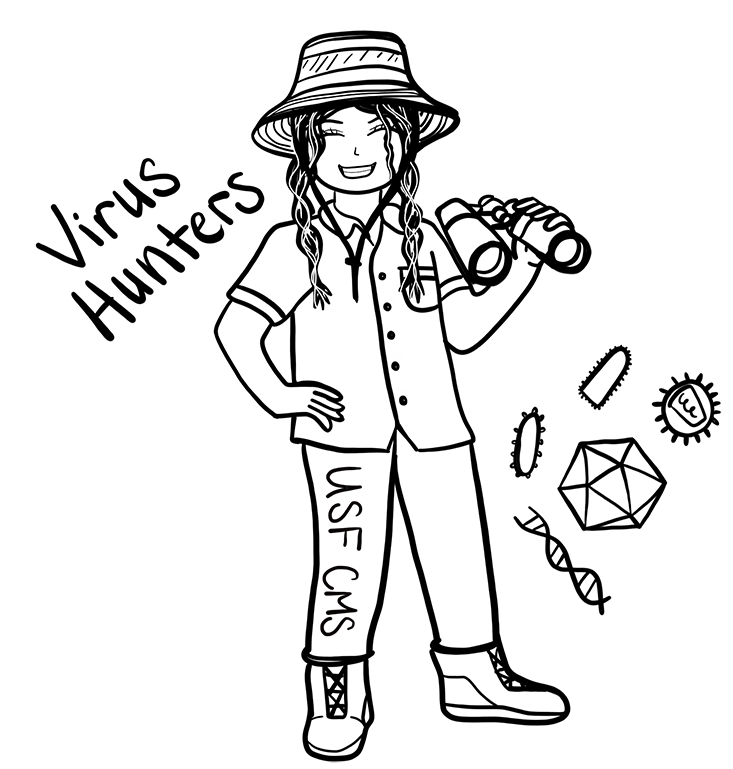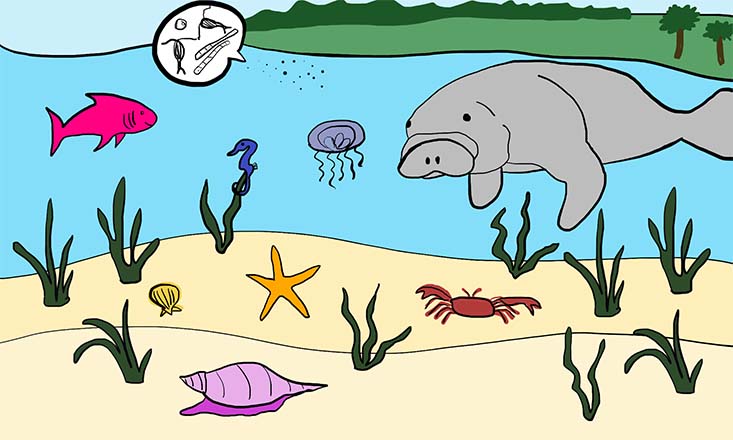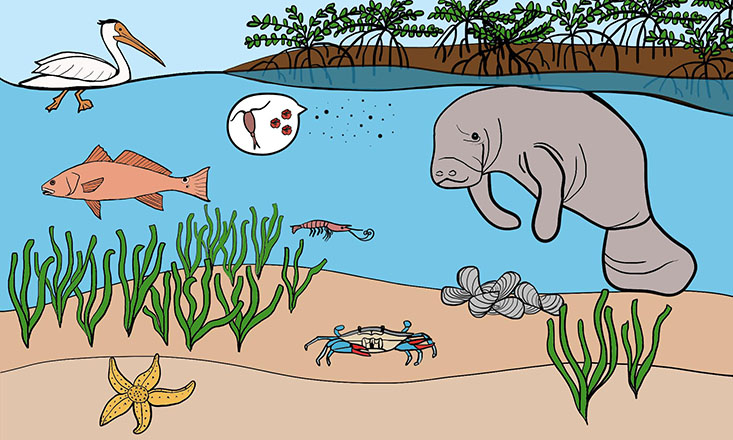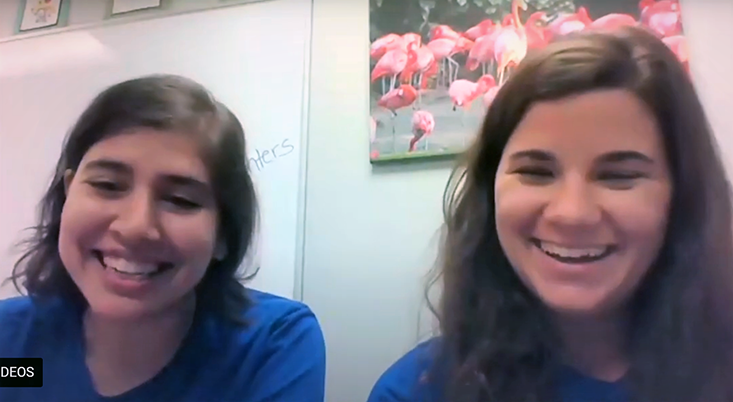Written by, Makenzie Kerr, Breitbart Lab Manager & Outreach Coordinator, USF College of Marine Science
For the second year in a row, the St. Petersburg Science Festival went virtual. The school day, which kicked off the two-day program, consisted of a series of 25-minute live presentations aimed at 4th and 5th graders. The kids got to hear from scientists, artists, and communicators from our local St. Petersburg community.
Every year our lab volunteers for the festival, and our focus is teaching about microbiology and genetics concepts. My job is to break down these intricate topics so that everyone can understand them.
What does it take to put together a virtual activity for kids?
1) Brainstorming
First, I think about what will be interesting to the kids. Our lab, run by Dr. Mya Breitbart, is known for looking for viruses in many organisms. Viruses have been on everyone’s minds because of COVID-19, caused by a coronavirus. Most recently, our lab has been hunting for viruses in Karenia brevis, the dinoflagellate that causes red tide, and seagrasses found in Tampa Bay. That’s why we called the activity, “Virus Hunters.”

Virus Hunters logo
2) Inspiration
There are so many fun games and activities out there for kids to access online. I like to check my favorite websites for inspiring activities. This time, I was inspired by this activity.
3) Outlining and sketching
Before I spend too much time and effort with the idea, I like to sketch out a draft and make an outline of what I would like the activity to look like.

Virus Hunters sketch
4) Feedback
One of the most important parts of the artistic process is feedback. The first people I ask for feedback are my labmates and friends, because they are also artists. After I know I am on the right track I head straight to my boss, Mya. She knows the material best and can always check for accuracy.
5) Web design and activity draft
To make the virtual activity accessible, I always make a website to host it. At this point, I mockup the full activity.

Virus Hunters activity background
6) Testing
Every good activity needs to be tested. My labmates get to be the guinea pigs and try out the activity for the first time. They let me know if there are any problems and if I should add anything else.
7) Day of prep
To prepare for the school day presentation, I make a script outline to make sure we stay on time and don’t miss any important details.
8) Final touches
Each piece of the project is triple checked by multiple eyes to ensure everything is ready for the event. I make any final edits and make the links live.
9) Nerves and practice
Every time I present, I get a bit nervous. Luckily my lab mate Natalie Sawaya, a PhD Candidate, was my partner for the live show. We practiced our outline a few times the day before and made sure all the technology was working properly.
10) Showtime
As soon as the Science Fest team says, “ready to start?” the nerves go away and the excitement begins. Natalie and I had a blast spreading our love for science to the community and introducing our new outreach activity. The students and teachers had amazing questions!

Virus Hunters live presentation screenshot
As you can see from the steps above, putting together a science fest activity can be a long and intensive project. Do not fret! Not every lab needs to create an activity from scratch. Like I said on Step 2 – Inspiration, you can find some awesome stuff out there. Feel free to adapt a premade activity and make it your own! Participating in outreach is a vital part of research, so hopefully this blog helps you decide if you want to make your own activity in the future.
It is always exciting to unveil a new activity and see how the community reacts. Our feedback this year makes us even more excited to participate next year!
See the Virus Hunters activity and recorded video here.